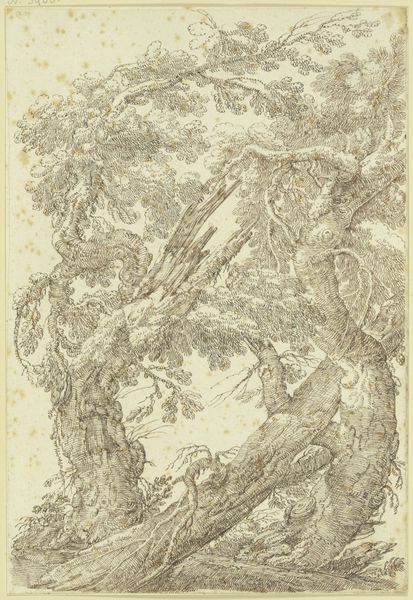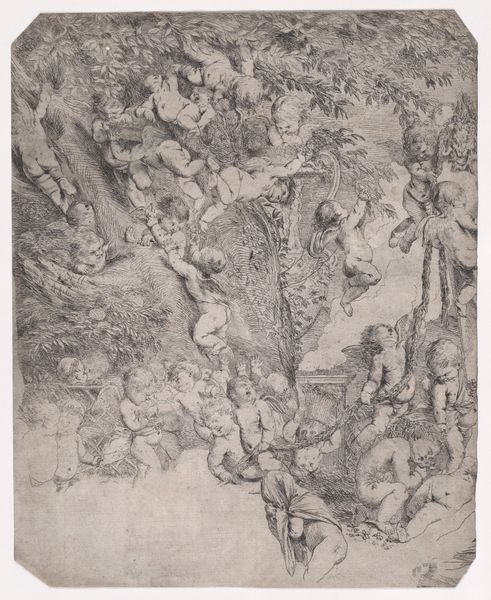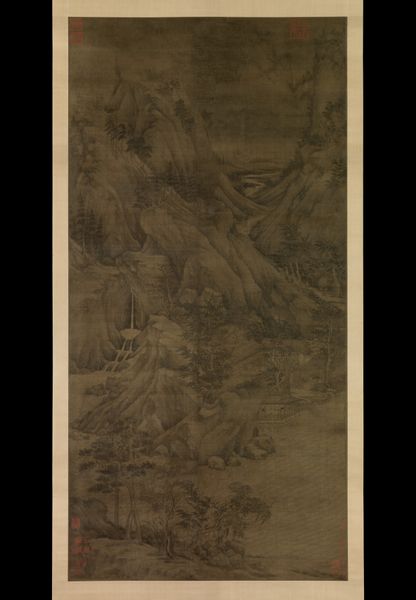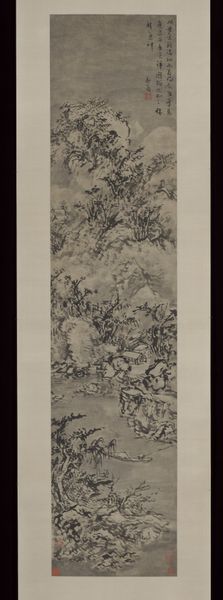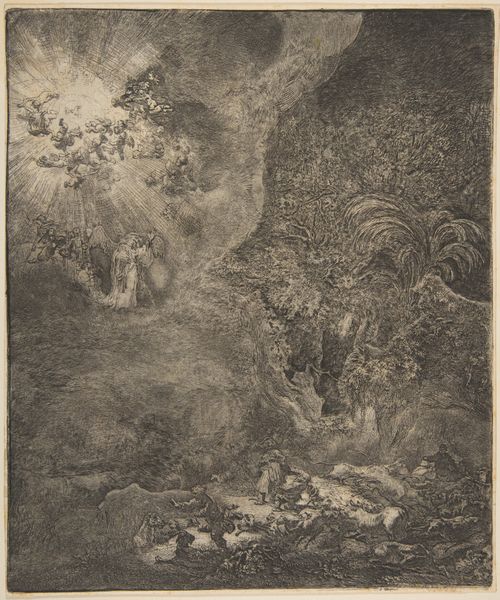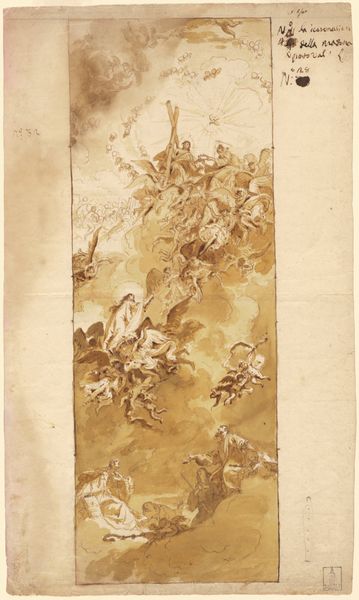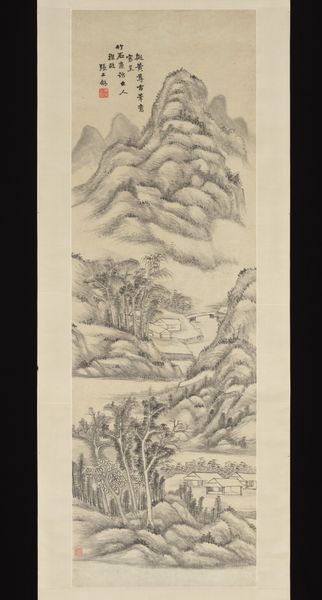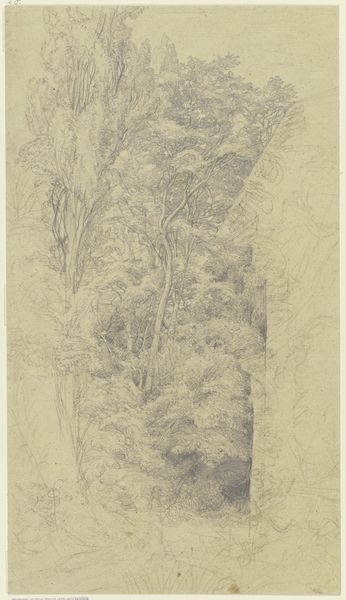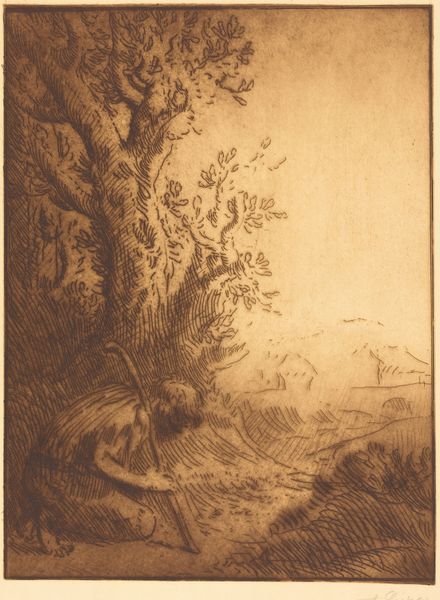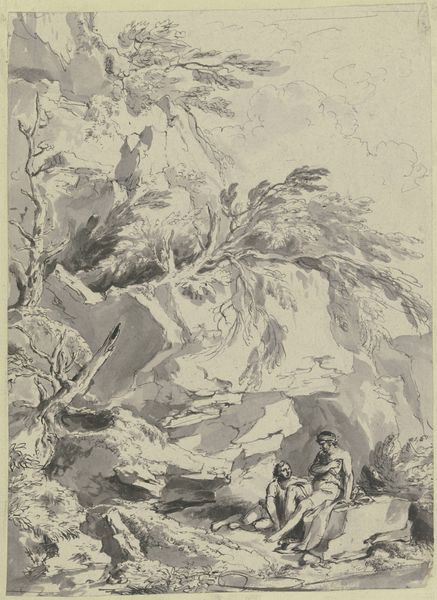
La Chasse au Tigre (The Tiger Chase) 1734 - 1782
0:00
0:00
drawing, print, etching, engraving
#
drawing
#
baroque
# print
#
etching
#
landscape
#
history-painting
#
engraving
#
realism
Dimensions: Sheet: 19 3/4 x 14 7/16 in. (50.2 x 36.6 cm)
Copyright: Public Domain
Curator: At first glance, this feels like tumbling down a hill covered in… everything! Chaotic and exciting, somehow. Editor: It's "La Chasse au Tigre", or "The Tiger Chase", an engraving, etching, and drawing attributed to Jean Jacques Flipart, though the dating on this one is rather broad, sometime between 1734 and 1782. It now resides here at The Met. What initially grabs you about its apparent chaos? Curator: The texture. The layers! All this frantic energy is carved into lines. A tiger hunt sounds exhilarating and terrible, and the artist translates that right into the line work. But is this *actually* a tiger chase? Because I’m getting a theatre backdrop vibe too... Editor: That "backdrop" feeling you pick up on is no accident, really. Images like these, mass produced via engraving and etching, shaped popular understandings and fantasies of the "exotic." Think of this as an early form of mass media shaping opinions about colonial encounters. Tiger hunts themselves became elaborate public spectacles, emphasizing European dominance. Curator: Dominance—of course. So, even this rather small piece becomes a reflection of large sociopolitical trends? That changes things. It becomes more sinister somehow, and much less “tumbling down a hill”. Still… technically masterful. I mean, just *look* at that palm tree teetering off the cliff. The guy knew what he was doing with that needle. Editor: Absolutely. Flipart’s attention to detail and command of the etching and engraving processes allowed for the wide dissemination of this image. Consider how the Baroque style’s inherent drama gets translated into this black-and-white print. And you start to understand just how this artwork can tell us stories about class, power, and representation during the 18th century. Curator: I love that interplay, where skilled technique gets yoked to, well, propaganda. It leaves me with the shivers, really, to think something so lovely can also be, in a way, complicit. What an amazing tightrope walk for art: existing in those contradictions. Editor: Indeed. “La Chasse au Tigre” leaves us with much to consider regarding the public life of images.
Comments
No comments
Be the first to comment and join the conversation on the ultimate creative platform.
